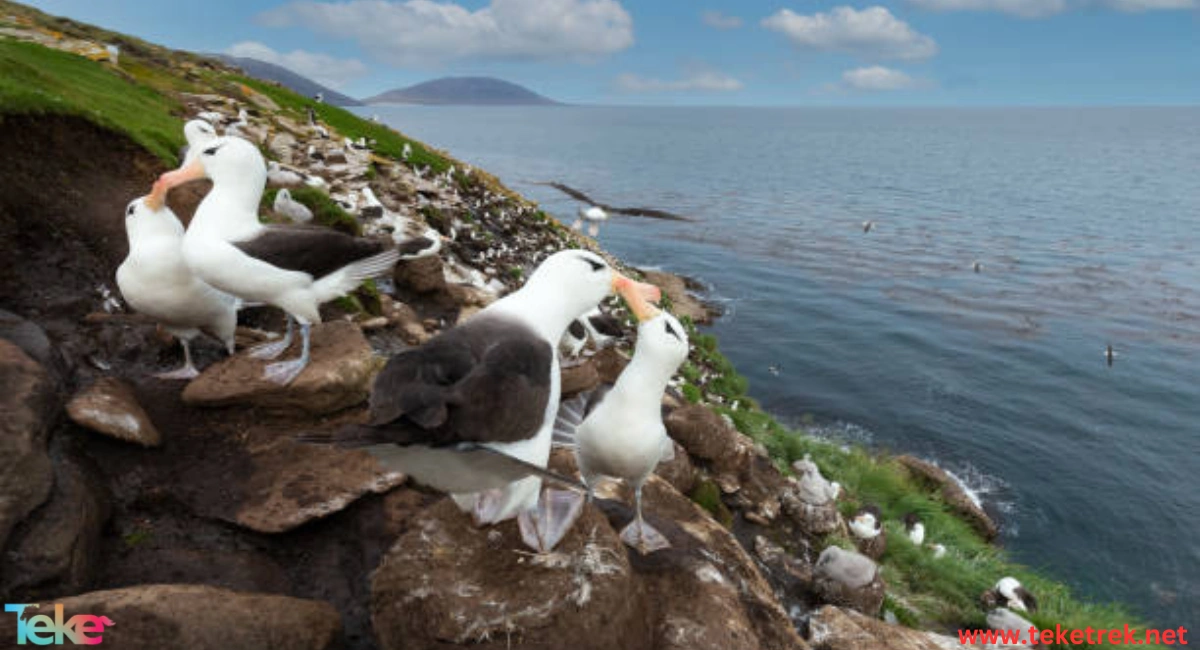Discover the wonders of the albatross, one of the largest birds in the world, and delve into fascinating facts about this unique creature. The albatross is renowned for its enormous wingspan, allowing it to glide effortlessly over vast distances, embodying the very essence of freedom in the skies. In this article from teketrek, we will explore intriguing details about the albatross that will deepen your appreciation for this magnificent seabird and its remarkable presence in the natural world.
Information About the Albatross
Delve into the world of the majestic albatross, a seabird belonging to the order Procellariiformes and scientifically known as Diomedeidae. The albatross is among the largest seabirds, boasting wingspans that can reach up to 3.4 meters in some species, enabling it to cover vast distances in flight. It is characterized by its hooked beak and large body, which weighs between 8 to 10 kilograms.
The albatross feeds on fish, crabs, and squid, making it a skilled carnivorous hunter. It inhabits saltwater environments and can fly at speeds of up to 64 kilometers per hour, allowing it to roam freely across the oceans. However, these birds face threats from both marine predators and humans, placing them among the species at risk of extinction. Immerse yourself in the fascinating details of this remarkable bird’s life, and learn more about its unique environmental habits and social behavior.

The Native Habitat of the Albatross
The albatross primarily resides in the Pacific Ocean, where various species are spread across vast areas of this immense body of water. Some species are also found in the Southern Ocean, although the albatross has never been observed in the Atlantic Ocean. The Galápagos Islands are among the favored locations for these birds to lay their eggs. Albatrosses spend most of their time in the sky, where their powerful and long wings allow them to travel thousands of kilometers in a very short time. However, during the breeding season, these birds return to land to build their large nests in colonies, where the breeding process takes place.
Breeding of the Albatross
Albatrosses build their nests in colonies, especially on the Galápagos Islands, and they only come to land during breeding seasons. These birds take around seven years to reach sexual maturity, during which they remain airborne, constantly flying. When selecting a mate, an albatross pairs up and lays just one egg, making it one of the few bird species that lays only one egg per breeding season.
The egg weighs about 50 grams and requires an incubation period of 2 to 3 months before hatching. The parents care for the chick until it can fly and groom itself, a process that may take between 5 to 10 months. The average lifespan of an albatross is 40 to 50 years, provided it isn’t hunted during this time.
Is the albatross endangered?
Yes, the albatross is indeed endangered. Despite spending most of its life in the sky, away from predators, illegal hunters are a significant threat. These hunters use special bait to capture albatrosses, and approximately 100,000 birds are caught annually, leading to a substantial decline in their numbers.
Tiger sharks also prey on albatross chicks when they are learning to fly and venture away from the colony. Albatrosses nest in remote locations, keeping them out of reach of many predators. However, human hunting poses the greatest threat, especially to females searching for food far from the colonies.
Historically, albatrosses were heavily hunted in the 19th century for their feathers, which were used in pillow making. Although this hunting has largely ceased today, the species remains threatened due to illegal fishing. It is estimated that around 19 species of albatross are currently endangered, with fears that they may face extinction in the near future. This is also because tuna fishermen use long fishing lines, which can easily capture albatrosses by accident.
What is the Classification of the Albatross?
The albatross is classified as a seabird from the order *Procellariiformes*. It inhabits different regions of the Pacific Ocean and is well adapted to cold environments, such as the Antarctic, where it easily finds food and survives. There are 21 different species of albatross, with 19 of them currently endangered due to overfishing and environmental changes caused by human activity.
The albatross is related to gulls and has a distinctive feature on the top of its beak called a “tubular nostril,” which gives it the name “tubenose.” This bird was first mentioned in a poem, contributing to its recognition today. The albatross is a unique bird that plays a crucial role in the marine ecosystem, and significant efforts are needed to protect it from extinction.

Frequently Asked Questions (FAQs)
What is the Albatross and Where Does it Live?
The albatross is a large seabird belonging to the order Procellariiformes. It inhabits various regions of the Pacific Ocean and the Antarctic, where it thrives in cold environments.
What Does the Name “Albatross” Mean?
The name “Albatross” is derived from the Portuguese word alcatraz, which means pelican. The name reflects the bird’s large size and its ability to fly long distances, similar to a pelican.
What Does the Albatross Symbolize?
The albatross symbolizes freedom and endurance, owing to its remarkable ability to fly vast distances without rest. In literature, particularly in Samuel Taylor Coleridge’s poem “The Rime of the Ancient Mariner,” the albatross also symbolizes both luck and curse, embodying themes of generosity, sin, and repentance.
In conclusion, the albatross is a symbol of freedom and endurance in the world of seabirds, distinguished by its unique ability to cover immense distances in flight. It is our responsibility to protect this magnificent bird and preserve its habitat to ensure its survival for future generations. By understanding and appreciating the albatross, we contribute to the broader efforts of preserving biodiversity and marine life.





